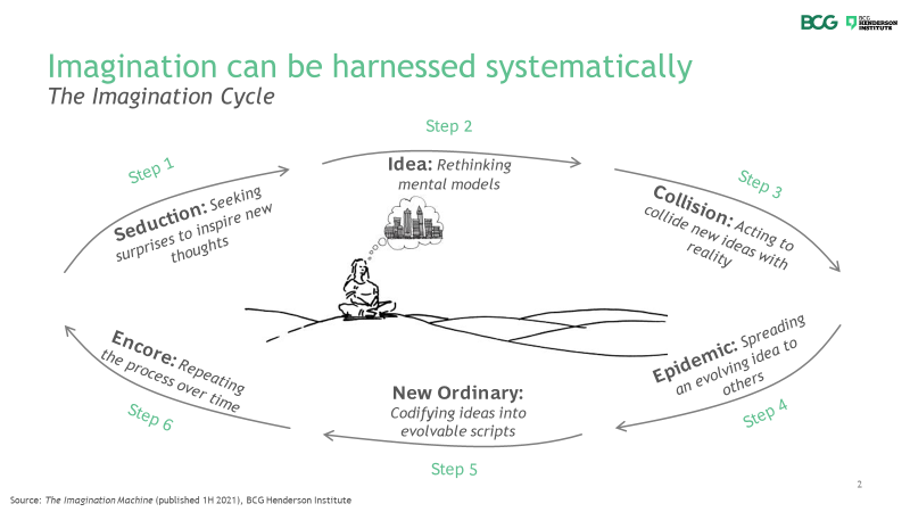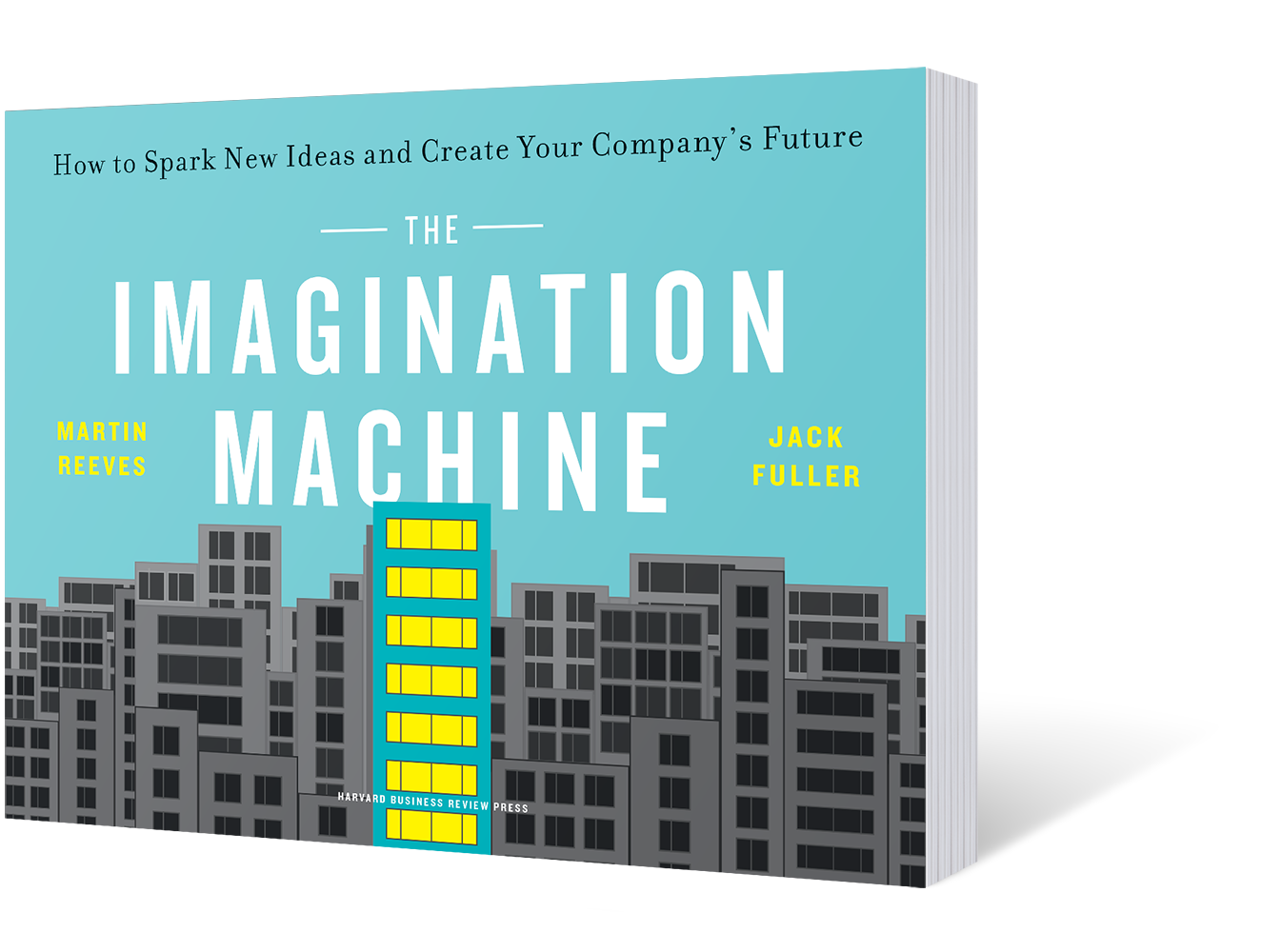Martin Reeves, Chairman of the BCG Henderson Institute, discusses the sources of innovation in Recruit.
An External View on Recruit Group's Efforts
As a business strategist, Recruit first came to my attention around 2015 as a successful serial business model innovator. From then on, I had the opportunity to participate as a guest in the knowledge sharing event FORUM, and to interview innovators in Recruit periodically. While researching my new topic around 2019, I also came to see that Recruit is also an example of a company which tries to systematically harness human imagination, the topic of my latest book, The Imagination Machine (Harvard Business Press, 2021).
Recruit as an Imagination Machine
Every great company is founded on an act of imagination, but after attaining success many lose this ability and become too oriented around financial optimization of the current model. Recruit is one of a handful of companies which has not succumbed to this trap.
Imagination, the ability to conceive of and realize new unprecedented ideas, is now more critical than ever to business. Competitive advantage decays faster than ever before, meaning that every company needs to reinvent itself continually. Also, as AI displaces humans in routine managerial tasks, companies will need to redeploy attention to more uniquely human cognitive tasks – like imagination.
While some believe that imagination is exclusively mental, individual, and too unruly to manage, we contend that imagination can in fact be harnessed systematically.
In The Imagination Machine, we explain the six steps of The Imagination Cycle – Seduction, Idea, Collision, Epidemic, New Ordinary, and Encore – to provide leaders with a guide for how to systematically foster and harness imagination in their organizations.

We used Recruit not only as an example of an imaginative company in general, but also as an example of excellence in step 4 specifically, the spreading of ideas. In the BCG Henderson Institute’s cross-industry survey, 55% of leaders said their company had no effective mechanisms for sharing and inspiring others with new and stimulating ideas. Recruit’s celebration and recognition of those who have taken on new challenges and the mechanisms (like the RING system) which it has built to encourage and fund new ideas are practices which can provide inspiration to other companies.
We also write about the actions which leaders can take to keep imagination alive in organizations, many of which we observed at Recruit:
Embrace or precipitate a crisis. A leader can investigate the future, identify potential future crises or constraints that demonstrate how old mental models are no longer sufficient, and encourage teams to address them – before the world imposes them.
Get into the world. Encouraging employees to encounter the outside world – such as through customer interviews or field experiences – will increase the chances of finding surprises, subsequently triggering imagination.
Establish an ideal. Leaders can spark reimagination by establishing an ambitious ideal – a goal that is both inspiring and challenging enough to be provocative – to spur both the frustration and aspiration needed to drive new ideas.
Encourage reflection. A strong leader can encourage people to take the time to step back and reflect to seek surprise in some aspect of the past – instead of defaulting to focusing exclusively on the present.
Promote new types of heroes. Traditional leaders tend to praise individuals who extract value from the established business model; imaginative leaders instead celebrate those who create new possibilities and encourage others to draw on their imaginations.
Unleash bold moves. Bold leadership actions – especially those that allow for no option other than a new mental model - break people out of their existing models and force them to think counterfactually.
Potential Challenges which Recruit May Face
As companies grow, leaders will inevitably encounter barriers to implementing and sustaining imagination. Once aware of these blocks, leaders can act to prevent them from impeding imagination. The most common examples include overspecialization, insularity, and success trap.
Overspecialization: Overly specialized teams risk developing subcultures and jargon that impede cross-group collaboration and damage communication between the imaginers and the executers. To solve this problem, leaders should reshuffle or rotate the organization regularly so employees can experience different perspectives and mental models.
Insularity: Companies that are unwilling to look outside of their organizations for ideas will encounter fewer sources of inspiration, hindering their ability to harness imagination. Instead, leaders should encourage employees to focus some time and attention on external matters.
Success trap: Often, leaders may believe that a company’s structure during its rise to success must be its ideal state, which leads to an emphasis on backwards-looking success indicators - preventing people from reinventing the company for future success. Leaders should instead use forward-looking success metrics to promote the sense that the company’s direction is not predetermined.
Recruit has reimagined its business several times, and has been changing its organizational structure on a regular basis, which one of the founding members described as "building deliberate unconformity.” But as BCG’s founder, Bruce Henderson observed, companies often unwittingly become prisoners of the thinking and procedures which underpinned their historic success. Recruit’s future success will depend upon perpetually both encouraging curiosity and avoiding complacency and the traps outlined.

MARTIN REEVES
Chairman, BCG Henderson Institute
Martin is a managing director and senior partner in BCG’s San Francisco office. Martin leads the BCG Henderson Institute, BCG’s vehicle for exploring ideas from beyond the world of business, which have implications for business strategy management.
Martin joined BCG in London in 1989 and later moved to Tokyo, where he was responsible for BCG’s business with Western clients. His consulting career has focused on strategy – with equal emphasis on idea origination and development, and application by consulting with clients on their strategy challenges.
He is the co-author of Your Strategy Needs a Strategy (HBR Press, 2015). Martin holds a triple first-class MA in natural sciences from Cambridge University and an MBA from Cranfield School of Management.

BOOK INFORMATION
The Imagination Machine: How to Spark New Ideas and Create Your Company's Future
A guide for mining the imagination to find powerful new ways to succeed.
Martin Reeves (Author), Jack Fuller (Author)
Publisher : Harvard Business Review Press (June, 2021)
Language : English